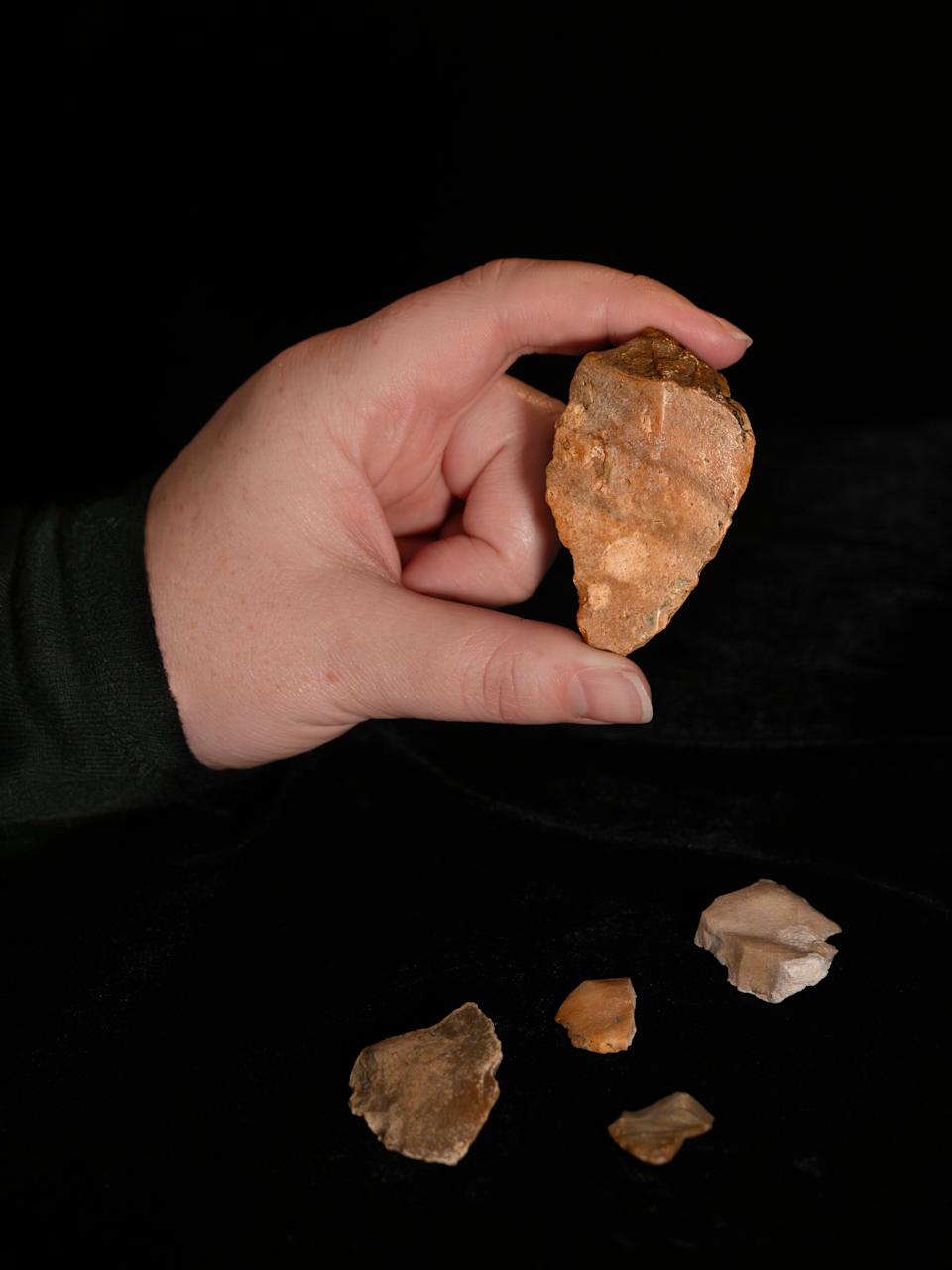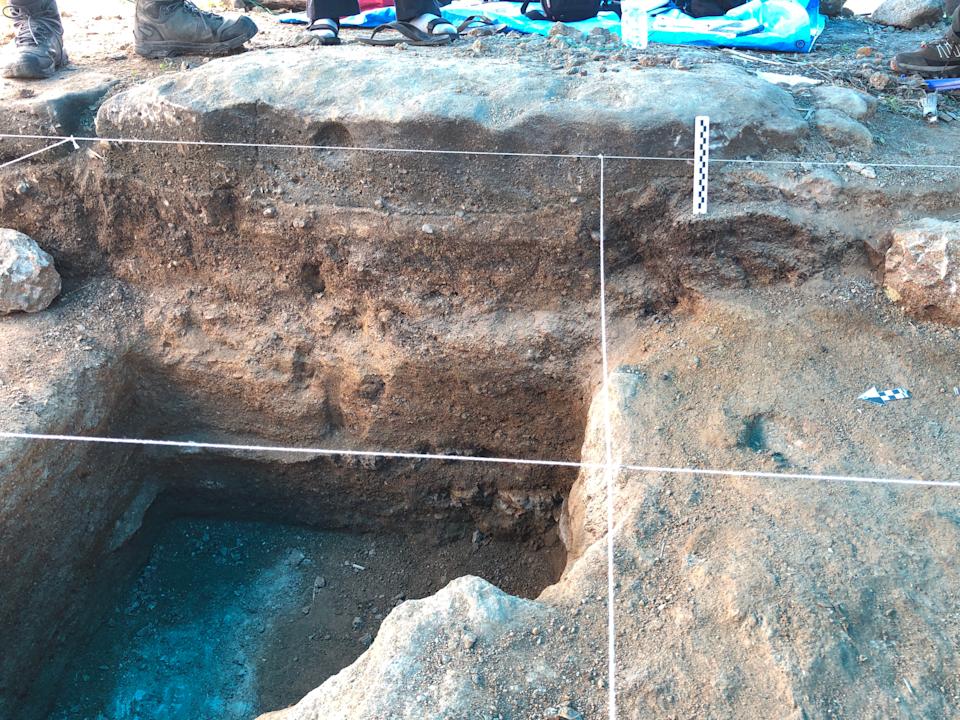Over a million years ago, an ancient human ancestor arrived on an island north of Australia, and no one knows how they got there or why they disappeared, but several theories have emerged.
All that remains of these mysterious people are stone tools unearthed from a pit beneath a modern-day cornfield that was once a fertile riverbed.
Because they lived on the Indonesian island of Sulawesi, it’s possible they were small like the now extinct “Hobbit” people who lived on neighbouring Flores. Until their bones are found, it will be impossible to know what they look like or how they evolved.
The discovery was revealed on Thursday, with details published in the prestigious journal Nature by Budianto Hakim from the National Research and Innovation Agency of Indonesia and Professor Adam Brumm from Griffith University. A total of seven tools were found in sedimentary layers of a sandstone in the town of Calio, and they’ve been dated to the early Pleistocene (the last great ice age), making them the oldest signs of hominid activity on the island.
Even though it was colder, there weren’t glaciers in the region because it was still the tropics, although it was more arid. Large robust pigs with tusks that projected from their mouths, and an extinct species of elephant called stegodon, roamed the island. Although it’s unknown what sort of plants grew during the era.
Pieces of the puzzle are slowly coming together, but there are a lot that are still missing.Professor Adam Brumm
How did these ancient humans cross the ocean?
Speaking with Yahoo News Australia, Prof Brumm said it was “fascinating” that human ancestors arrived on Australia’s “doorstep” but couldn’t get any further. He doesn’t believe they travelled using boats because they would have lacked the cognitive skills to create them, and they would have been more widely dispersed across the region.
“If they had boats, there’s nothing that would have stopped them getting to Australia, and we don’t have any evidence of that,” he said.
“I think it’s more likely to be some freak geological event, involving hominoids being washed out to sea by a tsunami from mainland Asia, and clinging to floating trees. Other species, including rats, monkeys, and even early elephants, have also conquered new islands by sea.
Humans have occupied Australia for at least 65,000 years.
The Sulawesi discovery dates from at least 1.04 million years ago.
Signs of Flores’s Hobbit people are from 1.02 million years ago.

The simple stone tools dug from Calio were likely used for hunting and scraping. Source: M W Moore
Why did these ancient humans vanish?
Archaeologists are excavating a second site on Sulawesi that they’re hopeful will register the arrival of modern humans. At 174,600 square kilometres, Sulawesi is the eleventh largest island in the world, and so it’s possible they co-existed with early hominids for generations.
“There are a lot of places they could have retreated to avoid modern humans. There’s a very interesting story waiting to be revealed on that island, but as of yet we just don’t have the evidence to tell us what it is,” Professor Brumm said.
Sadly, it’s easy to guess what eventually happened because whenever humans conquer new territory, extinctions follow. It’s believed we played a role in wiping out the Neanderthals, as well as hundreds of thousands of other animal species like the dodo, Steller’s sea cow, dodo, thylacine, and giant moa.

The tools were excavated from rock dating back to the last great ice age. Source: BRIN
Over time, modern humans likely began to dominate Sulawesi, but when the extinction of their predecessor occurred is unknown.
“Humans are not very nice. We seem compelled to do what we do. Our very way of life tends to result in not very good outcomes for the other species we share the planet with,” Prof Brumm said.
Love Australia’s weird and wonderful environment? 🐊🦘😳 Get our new newsletter showcasing the week’s best stories.


